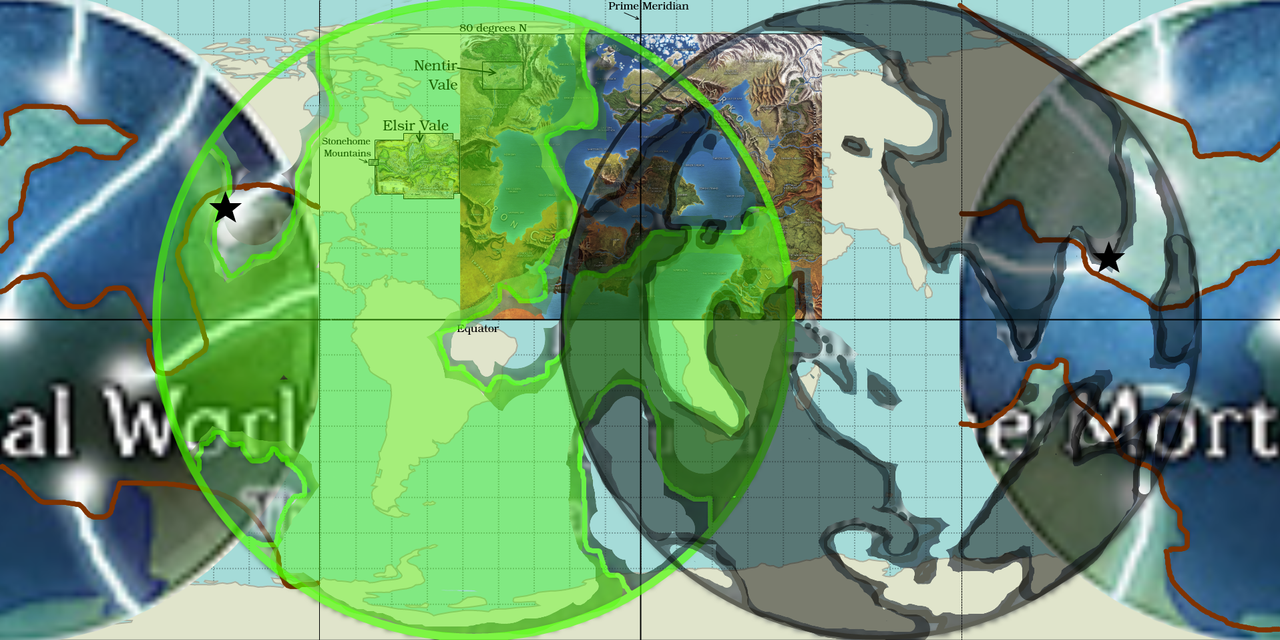Yaarel
🇮🇱 🇺🇦 He-Mage
One solution is, the Elsir Vale scale is wrong. Its distance is actually about twice its listed distance.
Then, the Mortal map is also twice the size. Its south edge is 20° latitude and its north edge is 60°. Thus the map is roughly 2800 miles from south to north. And planet Mortal is the same size as planet Earth.
Then, the Mortal map is also twice the size. Its south edge is 20° latitude and its north edge is 60°. Thus the map is roughly 2800 miles from south to north. And planet Mortal is the same size as planet Earth.

